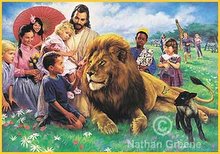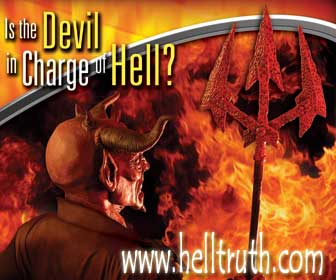Ritualistic Sacrifice Conducted!

Continued from Thursday...
In Thursday's post we examined the arrangement and Spiritual significance of the the Hebrew Sanctuary and some of the articles associated with it. We discovered that the symbolism declared by the scriptures point toward and represent things that are good, noble and desireable. We see in the Sanctuary construction a further and further zeroing in towards Holiness. Outside the fence is the sinner, in the outer courtyard an Altar of Sacrifice for sin where the Righteous wait upon the sinner to come and repent. Inside the Holy Place are the Lamp Stand, Shew Bread, and Altar of Incense for prayer. These items are representative of the Holy things that God has provided as reminders of our duty to Him. In the Most Holy Place we find the Ark of the Covenant and inside the Ark we find the Commandments. Sitting above the Ark we find the Mercy Seat and the Holy Shekina, Symbolic of the Throne of God in Heaven from where our Father reigns.
Notice the progression from the outside to the inside in the Sanctuary to the point that in the Holy of Holies we find not only the Presence of God and His throne but the foundation upon which He rests His Government and His Character. This foundation is upon the engraved rock. The Commandments are engraved upon rock to show their eternal nature. Yet Jesus is also called the Rock; He died in defense of the Commandments, and our Salvation is engraved upon His hands..."the Rock of our Salvation." Notice that one can not get more Holy than God and the foundation of His Character and His Government. "His Law is Perfect."
In the Ministration in the Sanctuary, because the Nation of Israel (Man) managed to sin on a daily basis, a method to atone for sin was provided. They had been trapped in a pagan culture with unGodly practices for nearly 400 years. Much of this had rubbed off on them. Sound familiar? Even though some tried to remain separate, the prevailing culture made certain that many would have feet soiled by the sinfulness around them. Scripture says that "Sin is the transgression of the Law" It also says that the "Wages of sin is death." Yet God in His mercy made a way of escape for the sinner without putting away the 10 Commandment Law that convicts of sin.
Each day the sinner in Israel would walk through the camp toward the sanctuary. He would bring with Him a sacrifice. For most this would require that for sin to be forgiven a Lamb would have to be sacrificed. Poorer people were allowed to bring doves for sacrifice. Either way, the act of bringing a sacrificial offering was to serve many purposes; among them was the cost of sin. It was not cheap to lose livestock or worse a family pet to the perversion of sin. It was also to serve as a reminder that for sin to be forgiven the blood of an innocent victim would have to be shed. It was to be a painful reminder of the consequnce of sin.
In the outer courtyard the sinner would confess his sin over the head of the Lamb. Then the Priest would hand the sinner a knife. The sinner was then required to kill the Lamb with his own hand to show that the sinner himself was responsible for the death of the innocent victim. The Priest would capture some of the blood of the Lamb into a bowl to take into the Holy Place. The Lamb was then roasted upon the Altar of Sacrifice. Inside the Holy Place the Priest would sprinkle the blood of the lamb upon the Altar of Incense and before the veil and the smoke of this sacrifice mixed with the prayer of repentance would ascend upward and over the veil into the Most Holy Place. The smoke would be lit with the Glory of the Shekina evidencing that God had heard the prayer of repentance. The glow would be seen over the veil.
This ministration by the Levitical Priest, in the Sanctuary and then later in Solomon's Temple, was conducted every day of the year. Then one day every year, on the Day of Atonement, the Sanctuary was cleansed of the sin that had accumulated within during the previous year. Ten days prior to this event Trumpets would sound indicating that a solemn time of soul searching and repentance was at hand. During this time the Israelite had to repent of all sin and seek forgiveness and strength from God to stay pure and undefiled.
Then on the Day of Atonement, the most solemn day of the year, two Lambs were brought to the Sanctuary. Lots were cast. The One on "Whom the Lord's lot fell' was then taken aside and the High Priest confessed upon its head all the sins of the nation of Israel for the previous year. Then the lamb was slain, the blood captured into a basin and the Lamb roasted on the altar of Sacrifice. The High Priest next went into the Holy Place and made an atonement prayer at the Altar of Incense for himself. Then the High Priest would, with humble trembling and contrite heart, enter into the Most Holy Place into the presence of God.
Entrance into the Most Holy Place was no trivial matter. It was done, only by the High Priest and only once per year. Scripture says that before God any sin will be consumed by His Glory. God's presence "is a consuming fire" to the unrepentant sinner. The High Priest was a man and had the same sinful nature as every man. So it was imperative that before entrance into the Most Holy Place that he forsake all characteristics that would be at war against the Law of God. A cord was actually tied to the ankle of the High Priest before he entered. Bells were hung from his garments so that those outside could hear him walking about. Should the High Priest come into the presence of the Shekina with unrepented sin, the "brightness" of the Lord would slay him and the other Priests holding the cord would have to drag him out.
Inside the Most Holy Place the High Priest would sprinkle the Blood of the Lamb upon the Mercy seat to make an atonement for the sins of Israel. The Blood mixed with the Glory of God would then fill the Sanctuary with such Brightness that the High Priest and Levites would have to quickly exit the Sanctuary. Once outside in the courtyard the other lamb, known as the Scapegoat, was brought before the Hight Priest. The High Priest then placed the sins of the people onto the head of the Scapegoat. This scapegoat was then taken away and led far out into the desert and left to die all alone.
When John the Baptist saw Jesus near the Jordan river he proclaimed "Behold the Lamb of God that takes away the sin of the world!" The lamb upon which the Lord's lot fell was symbolic of the coming Christ. It was Jesus, Who Scripture says "Created All things" (including the Commandments) that all the Old Testament Prophets longed to see. It was He that the Sanctuary Service foreshadowed. The innocent "Lamb slain from the foundation of the world."
The Scapegoat represented the instigator of sin, Satan. In perfect harmony with the scriptures this Scapegoat was led out to a desolate place to live alone and then die. When the Lord returns this earth will be left a desolate and broken down wilderness where "every island will vanish away." For 1000 years Satan will be "bound" confined to this broken and void earth to contemplate the consequences of his war against God.
Yet the story of the Lamb does not end here. It does not end with the Lamb dead. It begins with the Lamb being slain and it continues with Him rising to life in triumph and standing in the place of the repentant sinner having already paid the price for repented sin. In faith the repentant sinner looks to the cross at calvary to the Lamb for redemption. In faith the ancient Israelite looked forward to the coming Messiah Who "Would cause the sacrifice and oblation to cease." Dan Ch9. Today both stand redeemed by the Blood of the Lamb, "Who ever lives to make intercession" for sinful man. The story in the Bible ends with this same Messiah returning as King of King and Lord of Lords to reclaim His territory for His people and to live and reign and fellowship with them forever and ever.
Do we owe Him our allegiance? Oh that men could all see that the answer to this question is yes! We should love Him because He first loved us, willing to die in our place that we might live. "No greater love does a man posess that He lay down His life for His friends." If you have not accepted Christ into your heart please do so now while His Spirit is calling. He is knocking at the door and waiting for you to invite Him in.
In our next post we will examine how the High Priest actually foreshadows the Ministry that Jesus is doing for us right now before the throne of our Father in Heaven as revealed in the Book of Hebrews. May God bless your study of His Word.



1 comment:
Now that is so cool! I think I can read Leviticus now and not get bleary eyed. Thank You.
Post a Comment